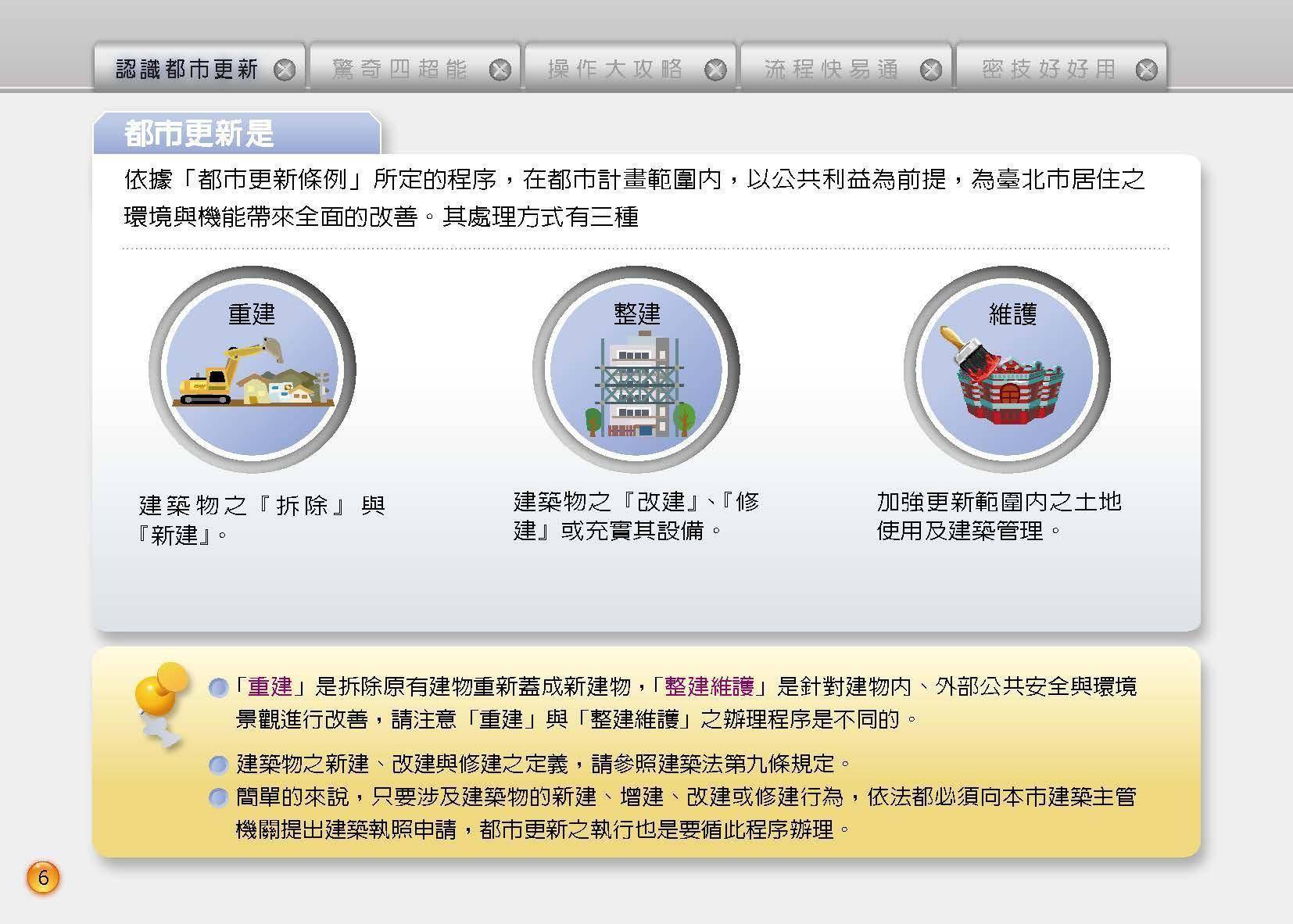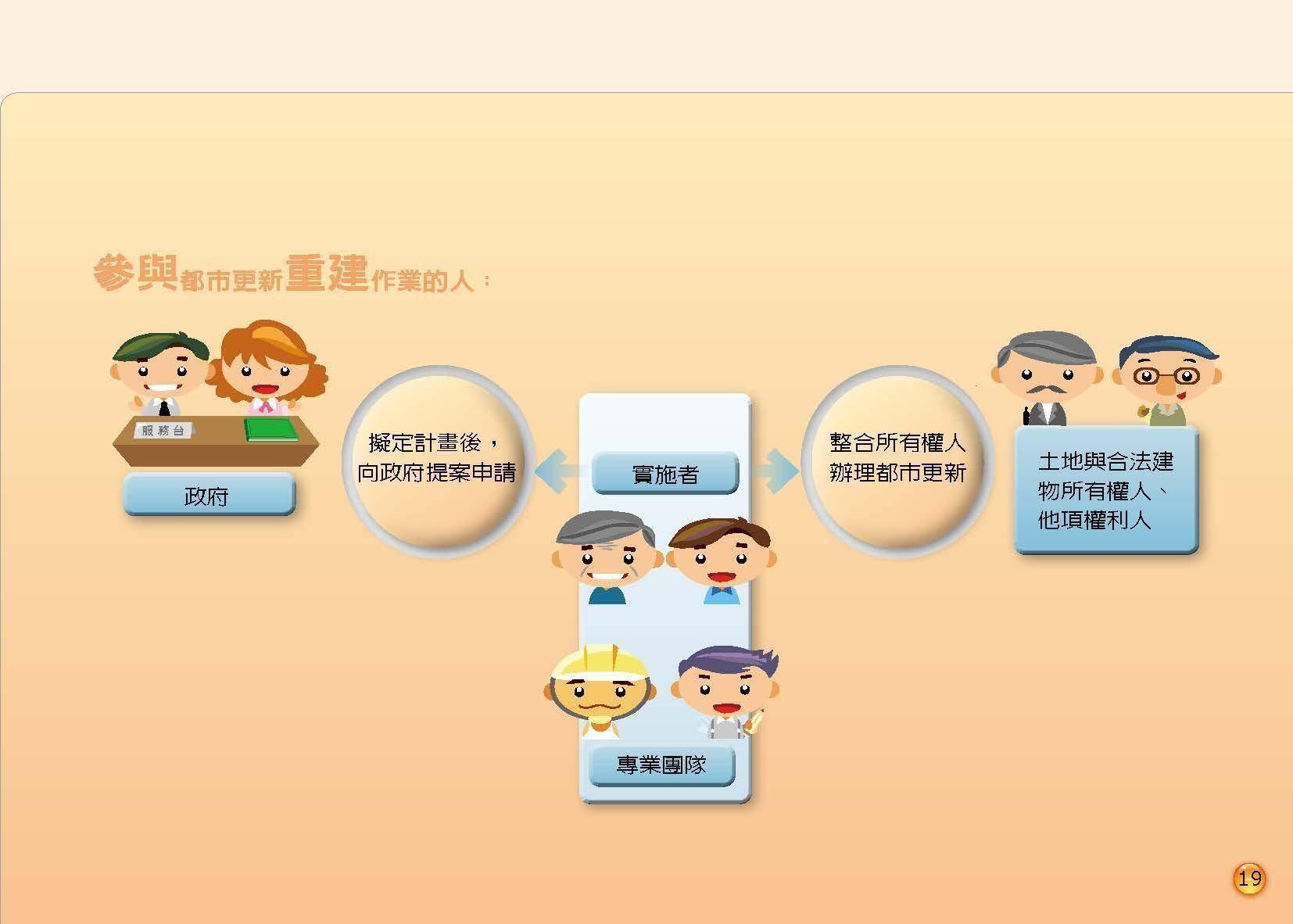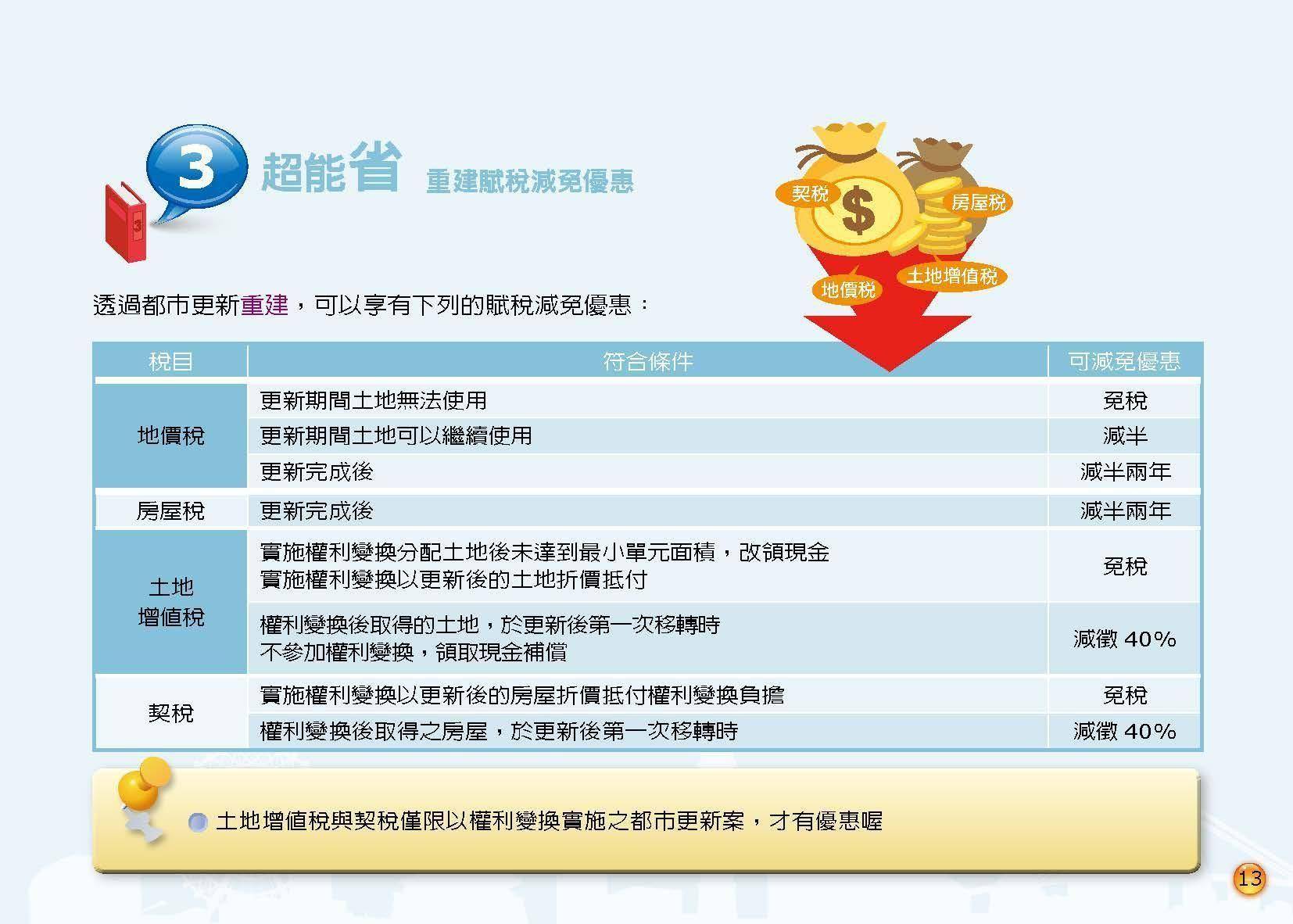Get to Know Urban Renewal
What is Urban Renewal?
There are 3 types of urban regeneration:

Source: Taipei City Urban Regeneration Office
Implementer:
Source: Taipei City Urban Regeneration Office
Urban Renewal Process:
There are three main stages: “Designating renewal area or unit”, “Urban renewal business plan” and “Rights transformation plan”.
Benefits of Urban Renewal:
Source: Taipei City Urban Regeneration Office
- In accordance with the procedures set out in the "Urban Renewal Act", within the scope of the urban plan, on the premise of public interest, to bring about a comprehensive improvement in our living environment, there are three ways to deal with it.
- In view of the dilapidated, old and decaying land, through the efforts of the Government and the private community, the redevelopment plan is drawn up and approved by experts and scholars to handle demolition, reconstruction, refurbishment or maintenance in order to restore urban function, improve the living environment and enhance the value of real estate.
There are 3 types of urban regeneration:

Source: Taipei City Urban Regeneration Office
Implementer:
- The implementers are organs, institutions or groups that carry out urban renewal undertakings in accordance with the provisions of the urban renewal regulations. Its significance is similar to the general folk nominal "client", "Party A", or "applicant" applying for a building license.
- When the renewal is implemented by government, the municipal government may implement by itself or entrust the Urban Renewal business organization to implement; as for non-governmental renewal, in addition to the landlord's self-renewal, the land owner of more than 7 people grouping to act as the implementers, it may be commissioned to business institutions to implement.

Source: Taipei City Urban Regeneration Office
Urban Renewal Process:
There are three main stages: “Designating renewal area or unit”, “Urban renewal business plan” and “Rights transformation plan”.
- Designating renewal area or unit: Designate an update area or unit by making urban renewal plan. The updated area is delimited by the government, and the update unit should be applied by the owner of the land and legal building in accordance with relevant regulations (refer to Q55 for applying for update unit delineation).
- After delineating an update area, the implementers shall integrate the willingness of owners in the renewal unit, and obtain the consent ratio stipulated in Article 22 of the Urban Renewal Act. After holding public hearing, the implementer should formulate Urban renewal business plan for application to review by competent authority. Then, after 30 days of announced public exhibit and being reviewed to pass by advisory committee, the plan should be approved and implemented by the municipal government. If handled as the joint construction agreement, the renewal can directly move on to execution phase. If handled as Rights transformation, a Rights transformation plan is required.
- After implementing Urban renewal business plan, the implementers shall, in accordance with the plan, conduct a Rights transformation willingness survey and coordination of relevant land rights. Entrust three appraisal companies with the valuations, and notify the relevant rights holders to participate in the selection. Formulate a Rights transformation plan according to the selected results for further process. After the Rights transformation plan is reviewed and passed, the municipal government approves and implements to move on to the execution phase.

Benefits of Urban Renewal:
- In the developmental process of urban renewal, the owner's rights and interests are not only be protected by the Urban Renewal Act, but according to the " Regulations of Bulk Reward for Urban Renewal", a maximum of 1.5 times ofthe statutory volume of the floor area can be accessed after the renovation.
- To get tax relief of land value tax, house tax, land value increment tax and deed tax during the implementation process.

Source: Taipei City Urban Regeneration Office


